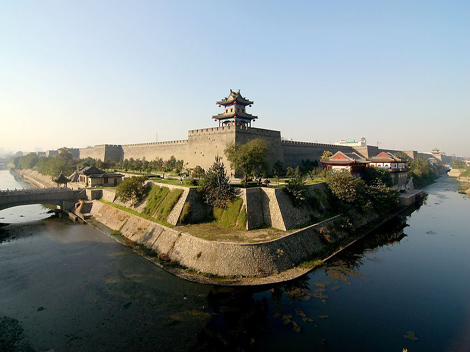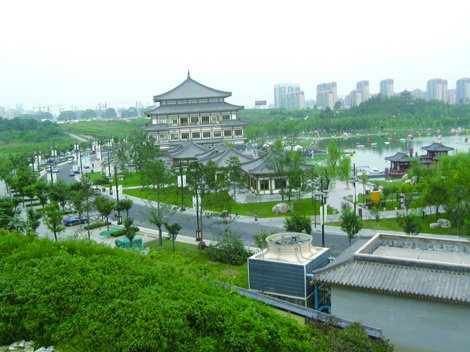
The ancient capital city of Chang’an (present day Xi’an in Shaanxi Province) was the capital city of choice for the greatest number of dynasties in Chinese history. As many as 13 dynasties built their capital cities here and it was also reputed to be the world’s longest-serving capital city with 1100 years’ history. Built on a large scale in a strictly symmetrical format, with streets laid out like a chess board and orderly inner streets, Chang’an was the greatest city of its time. It not only served as the benchmark for other ancient Chinese capital cities, but also influenced the design of capital cities of heighboring countries, for example, the ancient Japanese cities of Heijo-kyo (Nara today) and Heian-kyo (Kyoto today).

After putting an end to more than 300 years’ of war and strife during the Eastern Han Dynasty (25-220 AD), Emperor Sui Wendi (reign 581-604) began to construct Daxing city (Chang’an city during the Tang Dynasty, Xi’an in Shaanxi today) on a large scale during the second year (582) of his reign. Daxing city was built according to layout drawings, after official had studied the layouts of Ye city (Anyang in Henan Province today), built by the Kingdom of Wei (220265), and Luoyang city built during Northern Wei Dynasty (386-534). Accordingly, the imperial gardens and government offices were built along the central axis, Zhuque Avenue (which fronted the main gates of the imperial palace and inner city), in the northern part of Daxing city, thus strictly segregating the imperial palace and government buildings from the civilians’ dwellings. To the left of the inner city was the imperial ancestral temple while temples for societal offerings and prayers for deities, harvest and the earth were located on the right. In the year 618 AD, Daxing city was also designated as the capital city of the Tang Dynasty and had its name changed to Chang’an.

The city of Chang’an kept to the basic layout of Daxing city, similarly using Zhuque Avenue as the central axis. To highlight the importance of the imperial palace, the streets to both sides of the central axis, the eastern and western markets of the city as well as the residential dwellings and inner alleys were all positioned in a strictly symmetrical format. The city’s streets were laid out in a grid system and differentiated by varying grades. The city has 11 south-north streets and 14 east-west streets. Among them six main roads provide direct access to the main gates of the city while the rest were subsidiary roads. All the roads were lined with neat rows of water drainage channels on both sides, and shaded by rows of Chinese scholar trees. The residential areas were further divided into 108 alleys by the road system, where the eastern and western markets were centrally located. For the purposes of security and easy management, all these residential alleys and markets were built as enclosed structures. The alley gates opened and shut at regular hours, and curfews were imposed and monitored by the troops of patrolling guards. There were also patrolling soldiers at night and civilians were banned from going out at night. Until today, the ancient city walls of Xi’an, as well as the sites of the Tang imperial palaces, Daming Palace and Xingqing Palace, are still largely preserved with the original structures of the imperial city of Tang Dynasty. the provision of scenic spots and facilities for the public’s enjoyment in Chang’an city, helped set the capital city aprt from its predecessors. The well-known scenic tourist attractions in Chang’an included a pond located in the southeast corner of the city and lush gardens. During those days, it was the common practice among successful candidates of the imperial examinations to follow the bend of the river and tour the scenic spots.
We recommend:
